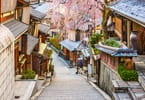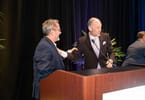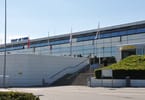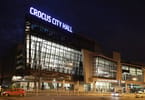An environmental group released its report card Wednesday on how well cruise ship companies operating in American waters are doing to reduce pollution, and not one received an overall grade of “A.”
Friends of the Earth graded 10 major cruise ship lines, including some of the biggest names in the business, such as Carnival Cruise Lines. Carnival received a “D-minus.”
The report issued the highest grade — a “B”— to Holland America Line. Norwegian Cruise Lines and Princess Cruises also scored relatively well, each getting a “B-minus.”
The lowest grades —”Fs” — went to Disney Cruise Line and Royal Caribbean International. Celebrity Cruises and Silversea Cruises also scored poorly.
Cunard Cruise Line and Regent Seven Seas Cruises received about average grades.
“Typically, cruise ship passengers are attracted to cruise vacations with pictures of pristine waters and promises of unspoiled scenery and abundant wildlife, but these passengers are never told that their vacations could leave a dirty mark on the places they visit,” said Marcie Keever, who spearheaded the “Cruise Ship Environmental Report Card.”
Cruise Lines International Association, a group representing 24 cruise lines, castigated the report, calling it arbitrary, flawed and ignoring “the fact that our cruise lines comply with and in most cases exceed all applicable environmental regulations.”
“It is regrettable that Friends of the Earth authors such misinformation when in fact this industry has made tremendous progress in the past several years in advancing technology and developing programs that go a long way in protecting the environment,” the association said in a statement.
Friends of the Earth graded the cruise lines on three categories: sewage treatment, air pollution reduction and water quality compliance in Alaska waters. It also issued a simple pass/fail grade for each line’s accessiblity to environmental information.
The group said Florida, which has some of the least stringent laws preventing cruise ship pollution, also has the top three cruise ship departure ports: Miami, Port Canaveral and Fort Lauderdale.
Alaska and California have taken the strongest stance nationally against cruise ship pollution, the group said.
Keever said some of the cruise lines have been working to make its ships less polluting, especially in the area of sewage treatment. Holland America, Norwegian, Cunard and Celebrity received high marks for having advanced sewage treatment aboard their ships.
Carnival and Disney received “Fs” for sewage treatment.
Disney, with two ships and two under construction, could score better on sewage treatment next year because it has promised to make upgrades on all its ships, Keever said. The company announced last week that for the first time it would begin offering tours in Alaska beginning in 2010.
Keever said the technology is in place for cruise ship companies to meet Alaska’s stringent environmental laws — a claim disputed by Alaska Cruise Association president John Binkley. He has said cruise lines would be happy to adopt affordable new technology to meet Alaska’s tougher standards if it were available, but there is nothing that is reliable.
Binkley was not available for comment Wednesday.
In 2008, 12 of the 20 ships allowed to discharge in Alaska waters received violations, mostly for ammonia and heavy metals, Keever said. The fact that eight ships had no violations shows it can be done, she said.
The 10 cruise lines received lower grades for reducing air pollution. Seven out of the 10 cruise lines received “Fs.” Only Princess received a high grade.
Princess has spent millions to reduce emissions from its cruise ships, Keever said.
The company invested $4.7 million in the Juneau port so that ships tying up there can plug into shore-based power instead of running their own engines to provide power to passengers and crew. The company also has invested $1.7 million to upgrade the Seattle port. Keever said nine of Princess’ 17 ships are equipped with electrical plug-ins.
The Los Angeles port later this year is expected to have shore-based power at its cruise ship terminal, she said.
Without the power upgrade at the ports and the retrofitting of the ships, cruise ships are forced to burn bunker fuel while in port, a “dirty-burning” fuel that is 1,000 to 2,000 times dirtier than diesel truck fuel, Keever said.
Cruise ships also can be equipped to burn marine distillate, a cleaner-burning fuel than bunker fuel, Keever said. California recently required all ocean going vessels, including cruise ships, to burn the cleaner fuel within 24 miles of shore.
WHAT TO TAKE AWAY FROM THIS ARTICLE:
- “It is regrettable that Friends of the Earth authors such misinformation when in fact this industry has made tremendous progress in the past several years in advancing technology and developing programs that go a long way in protecting the environment,”.
- Without the power upgrade at the ports and the retrofitting of the ships, cruise ships are forced to burn bunker fuel while in port, a “dirty-burning”.
- Keever said the technology is in place for cruise ship companies to meet Alaska’s stringent environmental laws — a claim disputed by Alaska Cruise Association president John Binkley.






















